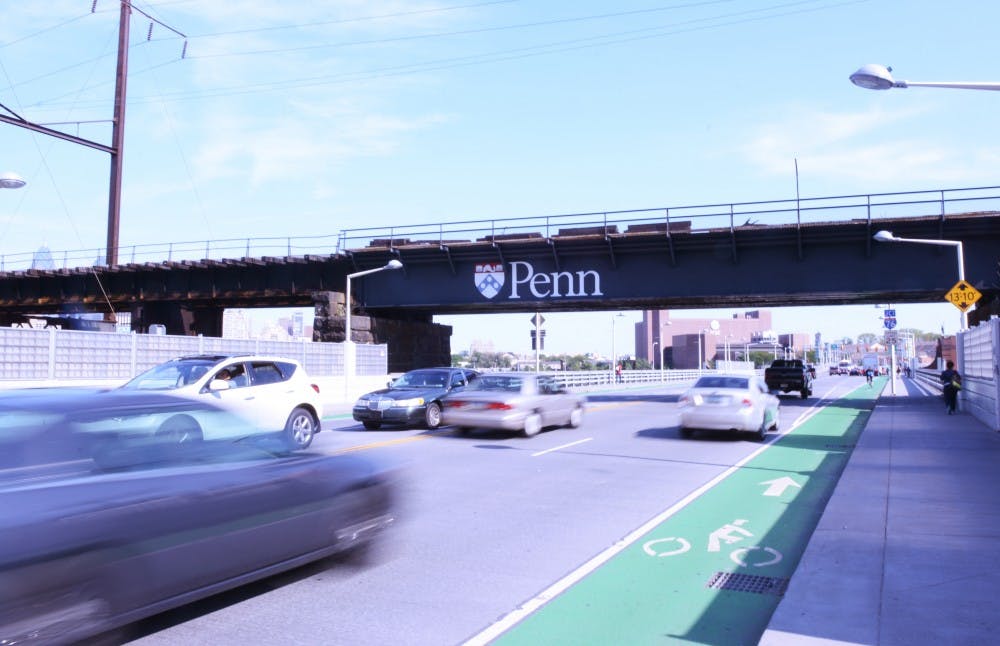
The Penn community will be more likely to venture beyond campus lines once University City District transforms urban streets northeast of campus into vibrant hubs.
UCD is studying urban revitalization methods in order to create a more welcoming environment on the streets leading into campus. Gehl Studio, a world-renowned urban design consulting firm, was recently hired to help analyze the study area, which encompasses the streets from the Schuylkill River to 33rd Street and from Arch Street down to Walnut Street.
Since the study area anchors the northern and eastern edges of Penn’s campus, if the study’s proposals come to fruition, renewed streets in the area will spur more movement from Penn to other parts of the city. The greater incentive to walk through this section of University City will especially “increase the level of circulation between West Philadelphia and Center City,” said Sarah Stuart, deputy director of the Bicycle Coalition of Greater Philadelphia.
While pedestrian amenities in University City — like its pleasant architecture and bustling street life — draw people into the neighborhood, the streets on the periphery fail to provide a strategic landscape that could “complement the work of Penn and others at the eastern edge,” UCD spokesperson Lori Brennan said.
“The area needs wider sidewalks, shorter distances for cross walks and sufficient public space to accommodate a high volume of people,” Stuart said.
The ultimate goal of the project is to create an environment that encourages people to spend time in the northeastern area of University City. As the eastern gateway into Penn’s campus and all of University City, these streets play a crucial role in establishing the neighborhood’s image.
“It is important to make a neighborhood gateway more inviting because it forms an impression of what the entire community is like,” said Barry Grossbach, director of the Spruce Hill District zoning committee.
Urban neighborhoods with better landscape design create a more populated atmosphere, which makes them more sustainable since densely populated areas are safer and more economically successful than unpopulated ones.
“The more folks you have in an area, the safer it becomes and the more you can encourage commerce and business ventures,” Philadelphia Streets Commissioner David Perri said.
Street revitalization boosts public safety not only through material improvements such as better street lighting, but also through the natural security that comes with more frequent social activity. As a result, the financial prosperity of the neighborhood profits because “business wants to be located where the population wants to be,” Perri added.
The long-term plan of UCD’s project is to “work with area institutions and landlords to help aid in the recruitment of new businesses,” Brennan said.
The study area will be most successful at drawing crowds if the streets become lined with shops, restaurants and other commercial functions. Interactive businesses on the ground floor “can promote social interactions by bringing more activity to the street facades,” PennDesign professor Stefan Al said.
Along with conducting preliminary surveys, UCD has commissioned Gehl Studio to run a comprehensive study on how to enhance the pedestrian experience. Company founder Jan Gehl is renown for urban design due to his pioneering work to enrich street life around the world — notably his pedestrian-friendly reforms to New York City’s Times Square.
Gehl’s urban ideology is based on the belief that people will linger in public areas if they are presented with the necessary amenities. But since cars became the focus of landscape design in 20th century American cities, urban streets have acquired “hostile environments that are only conducive to getting people from point A to point B,” Al said.
Based on recommendations that Gehl studio will release in a report, UCD will embark on a plan to supply urban resources that will revamp streets into more than just a means to an end.
The Daily Pennsylvanian is an independent, student-run newspaper. Please consider making a donation to support the coverage that shapes the University. Your generosity ensures a future of strong journalism at Penn.
DonatePlease note All comments are eligible for publication in The Daily Pennsylvanian.








